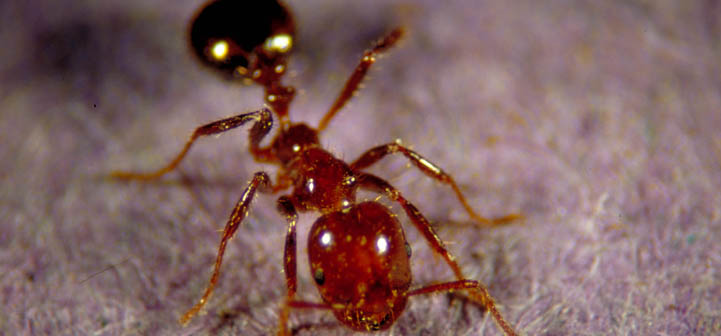FA Youth Home > List of Exercises > Protective Coloring
Activity: Protective Coloring
Overview
This exercise allows you to observe how camouflage can protect insects from predators.
Objective
Observe and identify the characteristics that help insects survive.
Materials
- Four slices of bread
- Food coloring: red, blue, green
- Cookie sheet(s)
Instructions
- On the day before activity, break each slice of bread into 20 pieces, keeping them separate. Leave the pieces of one slice of bread white. The other three will be colored.
- To color bread pieces: mix together 1/4 cup water and 10 drops of food coloring (red, blue or green). Soak the pieces of bread in the food coloring/water mixture. Spread the pieces onto a cookie sheet and allow them to air dry overnight.
- Select an area outdoors with short grass and where birds have been known to visit.
- Choose four areas about 6 feet apart, and place the bread in a circle of about 12 inches in diameter (one color per circle).
- What do you think will happen to the bread?
- Leave the bread in place for 4 hours.
- Pick up any remaining pieces.
- Count the number of pieces for each color of bread.
Questions
- Which bread pieces were consumed?
- Were there more pieces left of any color?
Wrap-up
- You should see that more of the blue, red and white pieces were eaten, while the green ones were not as popular. The green was camouflaged in the grass and more difficult for the birds to see.
Additional Information for Instructors
Here is an alternative activity that illustrates the value of camouflage
Materials
- 15 to 30 pieces of round colored candy such as Skittles or M&Ms, or small pieces of colored paper for each round of the game
- Large sheets of paper in colors to match the candy or the small pieces of paper
- Blindfolds
- Stopwatch/timer 30
Instructions
This activity can be done for each individual student or for groups of students. You can vary the length of time for the experiment to see the differences in foraging when there are time constraints.
- Before beginning, explain the activity to the students.
- Give one student or a group of students a sheet of large colored paper.
- Blindfold a student or group of students.
- Have the non-blindfolded students scatter 15 to 30 pieces of candy or small pieces of paper onto the large colored sheet.
- Set the timer for 15 seconds, 30 seconds or 1 minute.
- Say go, and start the timer.
- The blindfolded students should remove the blindfolds and begin picking up the pieces of candy (they can either set it aside or eat it your choice) or paper one at a time off the large sheet.
- At the end of the time period, stop the students.
- All of the students should then sort the leftover candy or pieces of paper by color and count the number of each color that was left on the paper.
- The idea is that more of the colored candy pieces or pieces of paper that match the color of the large colored paper will remain at the end of the time period because they blend with the background and are harder to spot. Usually, more is left of the colored candy or paper that closely matches the background color.
Wrap-up
- Discuss how this activity can relate to the color of insects. Does the color of an insect help protect it from predators?
You may want to refer to the original KIDzANTS Teacher Manual, which was included in the original release of the KIDzANTS Red Imported Fire Ant Youth module developed by the Texas A&M AgriLife Extension Service.
| << Previous: Life Cycle Game | List of Exercises | >> Next Exercise: Mound of Trouble Matching Game |
